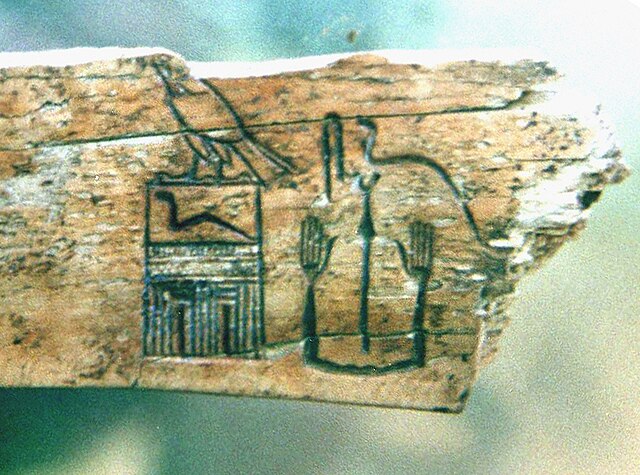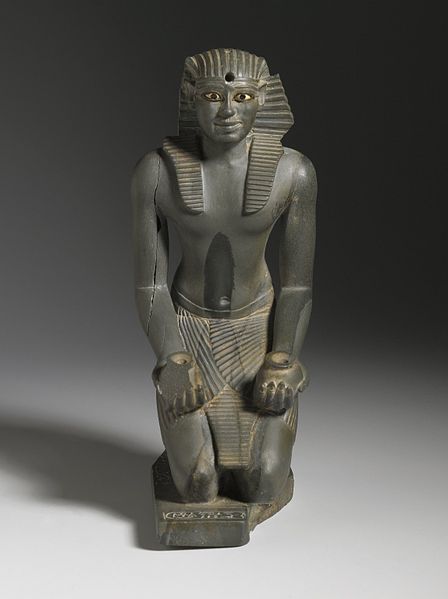Djet, also known as Wadj, Zet, and Uadji, was the fourth pharaoh of the First Dynasty, successor of Djer. Djet's Horus name means "Horus Cobra" or "Serpent of Horus".
The famous stela of King Djet which once stood next to his tomb in the Umm el-Qa'ab, Louvre Museum.
Ita, cartouche name of Djet in the Abydos king list.
Fragment of an object bearing the serekh of Djet and the name of a court official Sekhemkasedj, Egyptian Museum.
Label of King Djet (Ashmolean). Abydos, Umm el-Qaab, Tomb Z.
Pharaoh is the vernacular term often used for the monarchs of ancient Egypt, who ruled from the First Dynasty until the annexation of Egypt by the Roman Republic in 30 BCE. However, regardless of gender, "king" was the term used most frequently by the ancient Egyptians for their monarchs through the middle of the Eighteenth Dynasty during the New Kingdom. The earliest confirmed instances of "pharaoh" used contemporaneously for a ruler were a letter to Akhenaten or an inscription possibly referring to Thutmose III.
The Mask of Tutankhamun from tomb KV62 in the Valley of the Kings. Pharaohs' tombs were provided with vast quantities of wealth
A guardian statue wearing the red crown which reflected the facial features of the reigning king, probably Amenemhat II or Senwosret II, and which functioned as a divine guardian for the imiut. Made of cedar wood and plaster c. 1919–1885 BCE
Uraeus depicted on king Den, ivory label found at his tomb in Abydos, c. 3000 BCE, British Museum, London
Statuette of Pepy I (c. 2338-2298 BCE) wearing a nemes headdress Brooklyn Museum, New York








